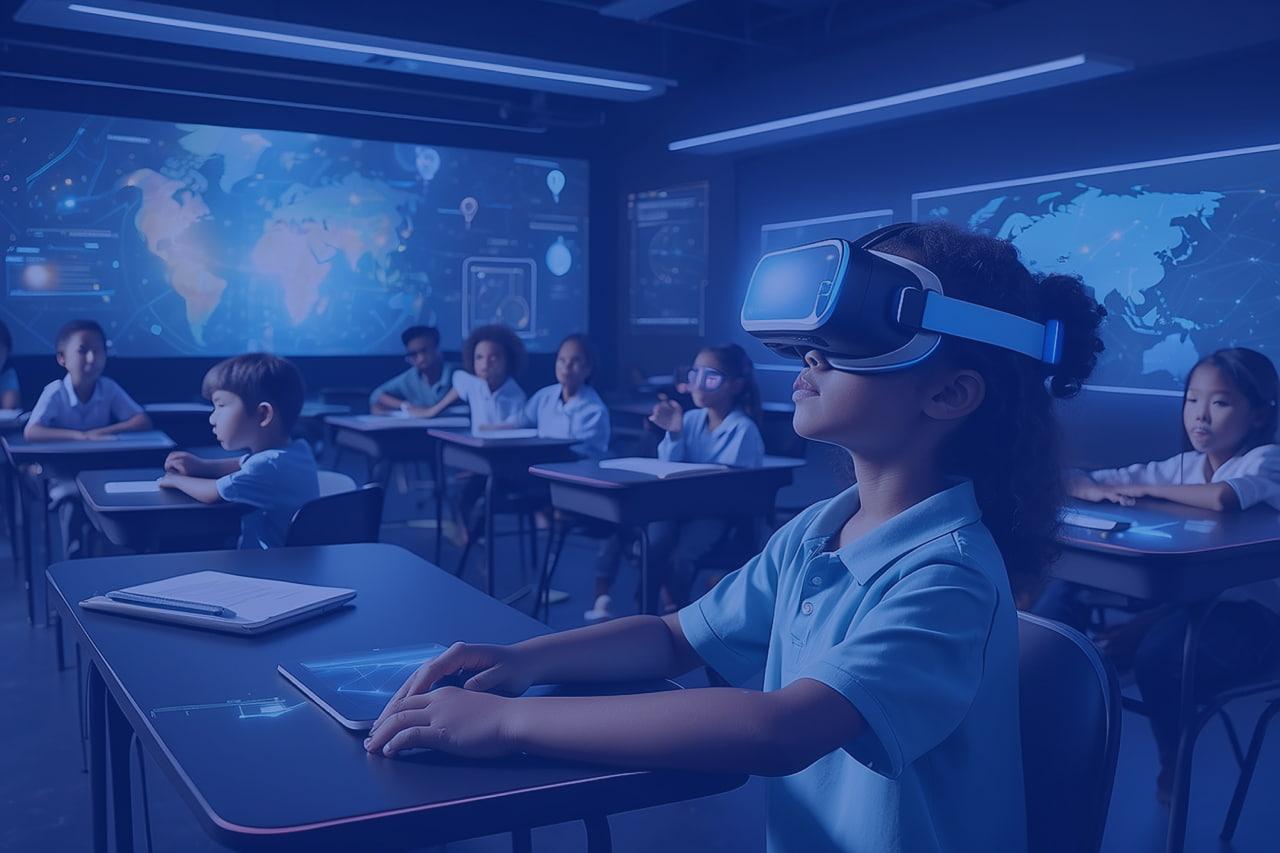Unlocking the Future of Education: how VR/AR Immersive Learning is Transforming Classrooms
Introduction: The digital Revolution in Education
Education is undergoing a seismic shift, thanks in no small part to the rapid advancement of immersive technologies like Virtual Reality (VR) and Augmented Reality (AR).
As we strive to prepare students for a fast-evolving digital world,VR/AR immersive learning is emerging as a game-changer in classrooms globally.
By fostering interactive, engaging, and unforgettable educational experiences, these technologies are unlocking new doors for teachers and learners alike.
What is Immersive Learning with VR and AR?
Immersive learning leverages virtual and augmented reality to simulate real-world scenarios or visualize abstract concepts, allowing students to learn by “doing” rather than merely observing.
Here’s how each technology works:
- Virtual Reality (VR): Uses headsets and digital environments to transport students to fully virtual settings—think exploring the inside of a cell or walking through historic cities.
- Augmented Reality (AR): Overlays digital elements (like 3D models or annotations) onto the real world via tablets, smartphones, or AR glasses, blending physical and digital learning seamlessly.
By integrating VR/AR immersive learning in classrooms,educators can make lessons more interactive and memorable,bridging the gap between theory and hands-on practice.
Key Benefits of VR/AR Immersive Learning in the Classroom
- Enhanced Engagement: Immersive experiences capture students’ attention, reducing distraction and increasing time on task.
- Deep Understanding: Complex subjects—like molecular biology,physics,or ancient history—become easier to grasp through interactive,visual,and spatial representations.
- Safe Experiential Learning: Students can practice lab experiments, medical procedures, or hazardous situations in a risk-free surroundings, boosting confidence and retention.
- Accessibility & Inclusivity: VR/AR tools can be tailored to various learning styles and abilities, enhancing educational equity.
- Global and Cultural Exposure: VR field trips enable students to ‘travel’ anywhere in the world, fostering global awareness and empathy.
- Collaboration & Creativity: Many apps foster teamwork and problem-solving, building digital literacy and 21st-century skills.
How VR/AR Immersive Learning is Transforming Education: Real-World Case Studies
Case Study 1: Revolutionizing Science Labs
At st. Anne’s School in the UK,students use VR headsets and interactive AR applications to perform virtual dissections and simulate chemical reactions that would be too risky—or costly—in a traditional lab.As a result, students reported a 30% increase in retention rates, and teachers observed higher participation levels, especially among students previously disengaged in science.
Case Study 2: Bringing History to life
In New York City Public Schools, history classes now include immersive VR journeys to the ancient pyramids, medieval castles, and key events in world history. According to district feedback, students were more motivated, asked better questions, and demonstrated deeper critical thinking after the virtual experiences.
Case Study 3: Enhancing Special Education
At Sunrise Learning Center, AR tools are used to support students with ADHD and autism. By personalizing learning experiences and providing interactive prompts, educators have seen significant improvements in focus, comprehension, and enthusiasm for learning.
First-Hand Experience: Insights from a Teacher
“Watching my students explore the solar system in VR for the first time was magical. Students who usually struggled to pay attention during science lessons became fully immersed, asking questions and sharing their discoveries.VR gave them a front-row seat to learning.”
— Mrs. Rivera, Science Teacher, California
Practical Tips for Implementing VR/AR in the Classroom
- Start small: Pilot a single VR/AR app in one lesson before integrating it school-wide.
- Choose Age-Appropriate Tools: Select immersive learning platforms designed for your students’ grade level and subject matter.
- Prioritize Safety & Accessibility: Ensure VR/AR content is safe and accommodates students with varying needs.
- train Staff: Provide professional development so teachers are confident using immersive technology tools.
- Encourage Reflection: After VR/AR sessions, facilitate discussions or ask students to journal their experiences to deepen learning.
- Leverage Free Resources: Explore open-source or free AR/VR education apps before committing to paid solutions.
Top VR/AR Immersive Learning Tools for Schools
- Google Expeditions: Offers guided VR field trips across the globe.
- Matterport: Converts real spaces into immersive 3D virtual tours.
- Zspace: Blends AR with interactive science simulations.
- Nearpod: Provides AR-centric lessons for K-12 classrooms.
- CoSpaces Edu: Lets students build their own VR/AR worlds and code interactions.
Overcoming Challenges: Making VR/AR Accessible to All
Implementing VR/AR immersive learning comes with challenges, from equipment costs to bandwidth limitations and accessibility concerns. Here’s how schools are overcoming these hurdles:
- cost-Sharing Initiatives: Districts pool resources or seek grants from technology foundations.
- Device Rotation: Using shared devices in small groups rather than one-per-student setups.
- Community Partnerships: Collaborating with local businesses and tech companies to sponsor immersive learning pilot programs.
- Hybrid Lessons: Blending traditional instruction with immersive content to maximize reach and minimize device reliance.
The Future of VR/AR in Education: What’s Next?
As immersive technology continues to advance, experts predict:
- Wider adoption of affordable, wireless VR headsets designed specifically for education.
- Expanded content libraries covering diverse subjects and grade levels.
- More cross-discipline lessons—combining science, history, language arts, and art through AR/VR.
- Stronger assessment tools measuring real-time learning within immersive environments.
Educators and technologists are now co-creating the next generation of learning: one that’s interactive, personalized, and truly engaging for every student.
conclusion: Embracing the Immersive Future of Education
VR/AR immersive learning is reshaping the educational landscape, empowering teachers and inspiring students.
As classrooms evolve to meet the demands of tomorrow, integrating virtual and augmented reality creates opportunities that were once imaginable only in science fiction.
By embracing immersive technologies, schools equip learners with critical skills, ignite curiosity, and prepare young minds for an interconnected, digital world.
The future of education is here—and it’s immersive, interactive, and unlimited in its potential. Are you ready to unlock it?

